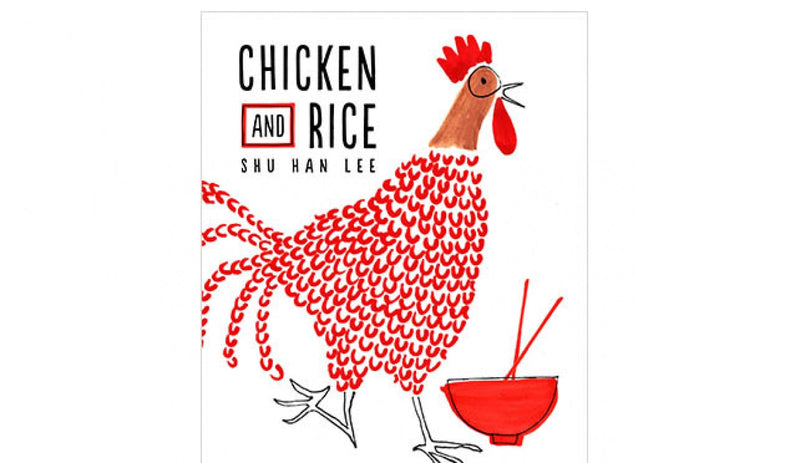Southeast Asian Cooking With Shu Han Lee
by Shu Han Lee

Shu Han Lee is a Singaporean cook, illustrator, designer and the writer of the adorable and inspiring blog Mummy, I can cook!. Her first cookbook, Chicken and Rice, reveals an amazing insight to her Southeast Asian background mixed with simple and stunning recipes.
We've ask her a few things about her favourite ingredients, dishes and tips.
What are your top picks for people cooking Southeast Asian cuisine for the first time?
Bamboo steamer baskets make steaming food very convenient, and as a bonus, look pretty on the dinner table. All you have to do is to sit the steamer in a few inches of boiling water at the bottom of the wok. You can also stack them and cook multiple things at once.
You don’t need a whole rack of pots and pans in different shapes and sizes to cook Southeast Asian food well. The traditionally round, sloped shape of a wok allows heat to distribute evenly, meaning it is great for stir-fries. It also means that for deep-frying, you can use a smaller amount of oil to create the depth needed for frying. The shape of a wok also allows you to easily fit a steamer basket or steaming rack over easily. With a wok lid, you can also braise food.
The sweet, nutty aroma of toasted sesame oil is the definitive smell of Chinese-influenced dishes. This also reminds me of the smell of home, because my mum uses it for her signature Sesame Oil Chicken.
Fish sauce is the liquid extracted from salt-fermented anchovies, and yes, as you’ve probably guessed, has a smell that might be challenging for cooks new to Asian cuisine. Its delicious pungent salty flavour makes up for it though, and it is an essential ingredient in almost every Southeast Asian kitchen.
Fermented from shrimps, this smells even crazier than fish sauce, but once cooked, its pungency transforms into the heady aromatic saltiness that gives your favourite Thai green curry or sambal its oomph. You'll need two kinds: the one that comes in a tub or jar, and the solid block belachan.
Tamarind is another form of souring agent used in sauces, dressings, curries, stews and stir-fries. Unlike lime or vinegar, tamarind has fruity sweet notes in addition to its tanginess.
When buying coconut milk, make sure it does not contain emulsifiers and gums, which will give it a weird gluey texture.
It’s worth getting a good soy sauce that is naturally fermented, as you will taste the complexity of flavour that comes from the traditional long brewing process. I tend to use Kikkoman, though there are many good brands nowadays.
Southeast Asian cooking is an exciting fusion of influences, both from around the region and around the world. What are the defining characteristics for you of Southeast Asian cuisines vs the rest of the world?
That's a tough one to answer as there's such vibrant unique food cultures to be found in different corners of Southeast Asia! If I had to sum it up in one word I would say: "Rojak", which is a Malay term used to describe a mishmash (and coincidentally is also a very delicious salad with a mishmash of vegetables, fried dough fritters and fermented shrimp dressing).
You will find recipes often combine the principles of Chinese cooking and the spices of India with local herbs and ingredients. In the countries that lie further down South, there are also strong influences from the ethnic Malays, so think generous use of spices, coconut milk and fragrant aromatics like lemongrass. Traditional recipes are very often adapted to include typically Southeast Asian ingredients, for instance, galangal and spices are thrown into a classic Chinese soy sauce braise to make Singapore's Teochew braised duck. As many countries in Southeast Asia were once Western colonies, you will also see influences from their old colonial masters in these countries’ cuisines. The French introduced the baguette to Vietnam, giving us our streetfood favourite banh mi.
One of the ways you celebrate your lunar birthday is with mee sua or 'longevity noodles'. Are there any other dishes in Singaporean or Southeast Asian cuisine that are only served at certain times of year or for specific occasions?
I'll pick one to talk about because it's my favourite, food-wise!
Rice dumplings, during well, Dumpling Festival, which falls on the fifth day of the fifth month of the lunar calendar. It's traditionally a Chinese dish of glutinous rice, pork, chestnuts and other deliciousness wrapped within a lotus leaf or bamboo leaf; but the Southeast Asian countries have adapted this to their local environment by using different stuffings and sometimes banana leaves or pandan leaves as wrappers.
In Singapore we call them zongzi or ba zhang as my Hokkien mum would call it. You find similar sticky rice dumplings in Cambodia (nom chang), Thailand (bachang) and Vietnam (banh tro). My favourite version is the Nyonya dumpling, made by the Peranakans (the descendants of Chinese immigrant traders who married the local Malays in the old British-run Straits Settlements of Singapore, Penang and Malacca). It's stuffed with pork cooked with candied wintermelon and spices, so it's sweet savoury and fragrant all at once. My extended family does dumpling swaps during Dumpling Festival week, and I pretty much make a straight beeline for my aunt's Nyonya dumplings.
You mention a number of dishes in the book as your favourites - congee, clear fish noodle soup and tom yum to name a few - but what dish stands out for you as your all time favourite and why?
Congee. It's the most comforting thing to eat when you're recovering from a bout of flu, a crazy night out, or a holiday filled with too much indulgent foods.
You can check Shu's work at www.shuhanlee.com or follow her on Twitter at @mummyicancook










